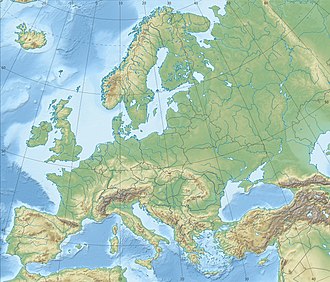June operations
On 4 June 1796, 11,000 soldiers of the Army of the Sambre-et-Meuse, under François Lefebvre pushed back a 6,500-man Austrian force at Altenkirchen, north of the Lahn. On 6 June, the French placed Ehrenbreitstein Fortress under siege. At Wetzlar on the Lahn, Lefebvre ran into Charles' concentration of 36,000 Austrians on 15 June. Casualties were light on both sides, but Jourdan pulled back to Niewied while Kléber recoiled toward Düsseldorf. Feldmarschal-Leutnant (FML) Pál Kray's 30,000 soldiers bested Kléber's 24,000 at Uckerath east of Bonn on 19 June, prompting the Frenchman to continue his withdrawal to the north. [2]
Meanwhile, operations of the Army of the Rhin-et-Moselle progressed more successfully for the French. On the 15th, Desaix and 30,000 French troops defeated FML Franz Petrasch's 11,000 Austrians at Maudach near Speyer. The French suffered 600 casualties while Austrian losses were three times as heavy. [3] Part of Moreau's army under MG Jean-Charles Abbatucci mounted an assault crossing over the Rhine at Kehl opposite Strasbourg on 24 June. The defenders were French émigrés and the forces of minor German states belonging to the Holy Roman Empire. They fought gamely, but were beaten with the loss of 700 men while the French lost 150. On 28 June, Desaix defeated FML Anton Sztaray's Imperial troops again at Renchen, inflicting 1,400 casualties for only 200 French killed and wounded. In the following weeks the Austrians determined some of their Imperial German allies to be unreliable and disarmed them. [4]
In reaction to the defeats in the south, Archduke Charles left Wartensleben in command of 35,000 men along the Lahn, put 30,000 troops into the fortress of Mainz and rushed south with 20,000 soldiers to reinforce Latour. [5]
July operations
After a minor clash at Rastatt on 5 July, Archduke Charles and Latour took up a position at Malsch with 32,000 troops. On 9 July, Moreau defeated the Army of the Upper Rhine at the Battle of Ettlingen. The archduke retreated 60 kilometres (37 mi) to Stuttgart, where he skirmished with the French on 21 July before continuing to withdraw east. [6] When Jourdan heard of French successes against the Army of the Upper Rhine, he went over to the offensive. After a series of minor victories at Neuwied, Giessen, and Friedberg in der Wetterau in early July, the French pressed Wartensleben back to Frankfurt am Main. [7]

